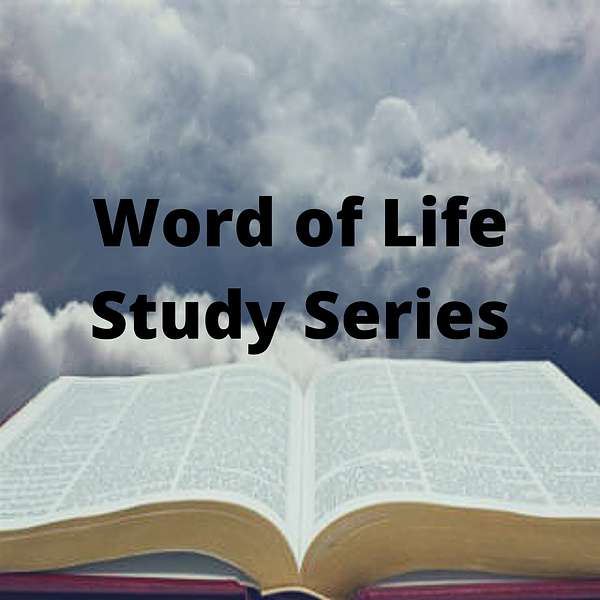
Word of Life Study Series
Word of Life Study Series
The Pentateuch: Why Study the Old Testament
Welcome to Word of Life Study Series- The Pentateuch! Here we are starting a new season and I am really excited about this comprehensive study. I believe that it will provide an excellent foundation to your Christian faith. As we study the Pentateuch together (first 5 books of the Bible), we see the origin and fall of mankind, blood covenant, the birth, deliverance and journey of a nation to their Promise Land- rich in typology! What makes this study particularly exciting, is seeing how much Jesus was being foretold and revealed throughout the Old Covenant, announcing the Gospel to us in advance. Throughout this season as we dive into the dynamics of blood covenant and the Levitical Priesthood I have made many references in these episodes from one of my favorite Bible School textbooks, “The Miracle of the Scarlet Thread” by Richard Booker. I highly recommend this book for a greater look into this all important subject.
1. The Structure of the Bible
The 66 books of the Bible are of course, divided into two great sections, known familiarly as the Old and New Testaments. The term testament here carries the sense of “covenant” or “agreement.” Until well into the Christian era, what we now know as the Old Testament was referred to as “the Scriptures,” or “the Law and the Prophets.” When the books of our New Testament were written and recognized, the title “Old Covenant” was applied to the Scriptures of that day; “New Covenant” to the works of the apostles and their companions.
2. The Order of the Books
The arrangement of the books of the Bible as we have them now is in part chronological and in part logical. That is, the order is largely historical, in time sequence; and at the same time an arrangement by type of material is provided. The first books of the Old Testament are in the main historical, and carry the thread of narrative from creation to the return of Israel from captivity in Babylon. Following the historical books, whose record will provide the outline for most of this text, are placed the five books of wisdom and poetry. The last 17 books of the Old Testament are known as the prophetical books: the major and minor prophets. A similar pattern of arrangement is found in the New Testament. The first five books give the historical narrative and basis of fact upon which the remainder is built. Following the books of historical emphasis comes the Epistles or letters to the Churches. The New Testament closes, as does the Old, with a book of which the primary emphasis is on prophecy, directed toward the future, the book of Revelation.
3. Parallelism of the Old and New Testaments
It will be noticed that there is an interesting parallel in the arrangement of the books as they stand in our Old and New Testaments. It should also be noted that the relationship between the structures of the Old and New Testaments is progressive as well as parallel. The New Testament builds upon the Old Testament. The prophecies of the Old Testament, fulfilled in Christ, become the histories of the New Testament. We have, then, a grand ascent through the ages from creation to the Cross to the crown in another great “Pentateuch” or fivefold outline. The nexus or point of contact is the redemptive life, teachings, and atoning death of Jesus Christ.